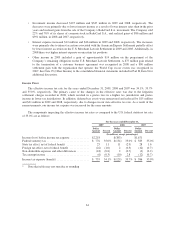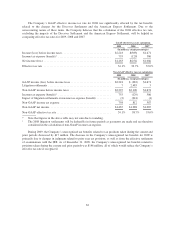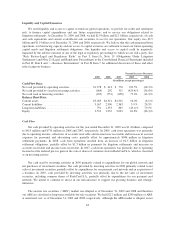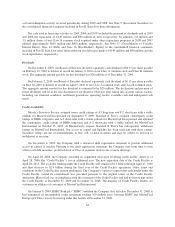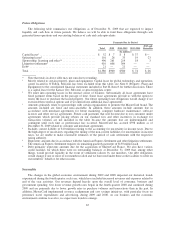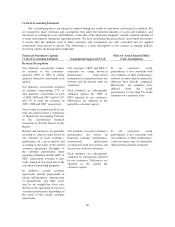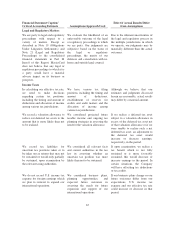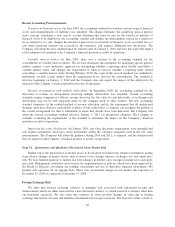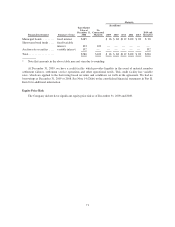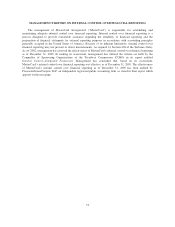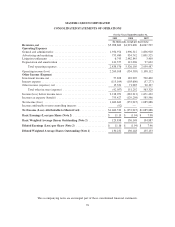MasterCard 2009 Annual Report Download - page 78
Download and view the complete annual report
Please find page 78 of the 2009 MasterCard annual report below. You can navigate through the pages in the report by either clicking on the pages listed below, or by using the keyword search tool below to find specific information within the annual report.
Financial Statement Caption/
Critical Accounting Estimate Assumptions/Approach Used
Effect if Actual Results Differ
from Assumptions
Asset Impairment Analyses
Prepaid Customer and Merchant
Incentives
We prepay certain customer and
merchant business incentives. In the
event of customer or merchant
business failure, these incentives
may not have future economic
benefits for our business.
Impairment analysis is performed
quarterly or whenever events or
changes in circumstances indicate
that their carrying amount may not
be recoverable. The impairment
analysis for each customer requires
an estimation of our customer’s
future performance and an
assessment of the agreement terms
to determine the future net cash
flows expected from the customer
agreement.
Our estimates of customer
performance are based on
historical customer performance,
discussions with our customer and
our expectations for the future.
If events or changes in
circumstances occur that we are not
aware of, additional impairment
charges related to our prepaid
customer and merchant incentives
may be incurred. The carrying value
of prepaid customer and merchant
incentives was $445 million at
December 31, 2009.
Goodwill and Intangible Assets
(excluding Capitalized Software)
We perform analyses of goodwill
and intangible assets on an annual
basis or sooner if indicators of
impairment exist.
Goodwill and intangible assets are
assigned to our reporting units. The
fair value of each reporting unit is
compared to the carrying value of
the respective reporting unit. Our
goodwill policies are fully described
in Note 1 (Summary of Significant
Accounting Policies) to the
consolidated financial statements in
Part II, Item 8 of this report.
We utilized a weighted income
and market approach for
determining the fair values of our
reporting units. Our significant
valuation judgments included
forecasting cash flows, selection
of discount rates and selection of
comparable companies. We used
both internal and external data to
make these judgments.
If market conditions or business
conditions change in the future, we
may be exposed to impairment
charges associated with goodwill and/
or intangible assets. The net carrying
value of goodwill and intangible
assets, excluding capitalized software,
was $539 million, including $209
million of unamortizable customer
relationships, as of December 31,
2009.
We determined that the majority of
our customer relationships, which
are intangible assets, have indefinite
lives. In addition to the impairment
testing noted above, we assess the
appropriateness of that indefinite
life annually.
We used internal data regarding
changes in our customer
relationships and future cash flows
to assess the indefinite life and
assess fair value.
If a definite life is deemed to be
more appropriate, it would require
amortization of the customer
relationships which would result in
a decline of future net income.
68





